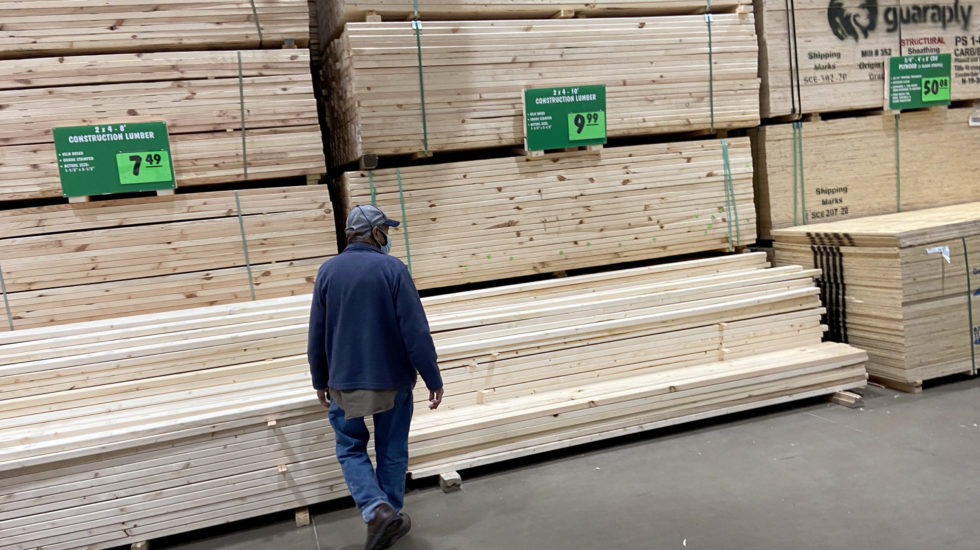Wood – the humble commodity used in everything from toilet paper to construction – has never been more expensive. New homeowners are feeling the pain.
The cost of lumber has nearly tripled since the beginning of last year, surging as high as $1,300 per 1,000 board feet, according to Bloomberg.
CNBC reports that the eye-popping increase has “added $35,872 to the price of an average new single-family home.” Surprisingly, that hasn’t tamped down demand. Single-family housing starts in March 2021 were 41% higher than in March 2020, according to the U.S. Census.
What’s behind the sky-high timber prices?
The pandemic is partly to blame, but so is a miscalculation of its effects. From The Wall Street Journal:
Mills shut down and choked back output at the pandemic’s onset, reasoning that widespread job losses would wipe out what was looking like a promising spring for home-building. They were wrong.
Stuck-at-home Americans undertook home-improvement projects. Builders faced a stampede to the suburbs, brought on by record-low mortgage rates and people looking for more living space. New York City’s bars and restaurants built outdoor seating so that they could stay in business.
Bloomberg says a tight labor supply is also contributing to the price increase:
The lumber industry has been struggling with a labor shortage for many years. The number of loggers in the U.S. has dropped almost 40% from 20 years ago, according to the U.S. Bureau of Labor Statistics.
Many jobs have been automated. Some of those that remain are dangerous and low-paying. So just as wood is more in demand, there isn’t an adequate supply of workers. This means producers can’t create as much timber as the market wants, which bumps up prices.
Confusion over a tariff on Canadian lumber is not helping matters. After months of criticism from the National Association of Homebuilders, the Trump administration cut the tariff from 20% to 9% in December. But it’s unclear if the Biden administration will keep that number in place. Any change would likely be retroactive, giving importers pause.
Most experts agree that the price of lumber will remain high in the foreseeable future. But relief is not too far off. More from Bloomberg:
“Even though we expect lumber demand to hold up well for some time, we still think that a rebound in supply will lead to a sharp fall in the price of U.S. lumber over the next eighteen months,” Capital Economics commodities analyst Samuel Burman wrote in a recent note.
